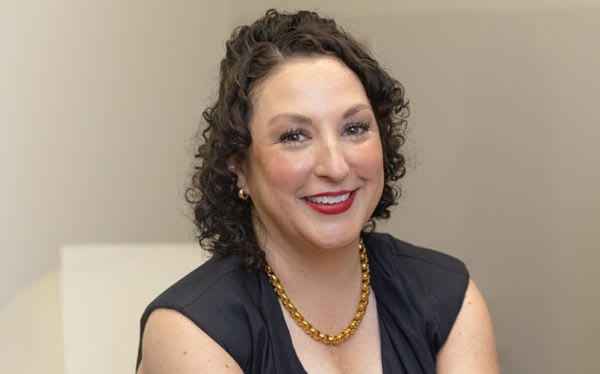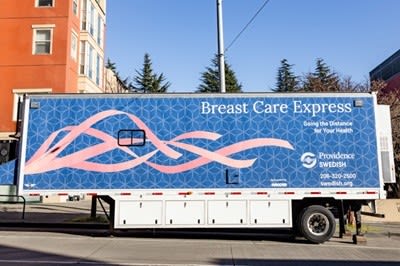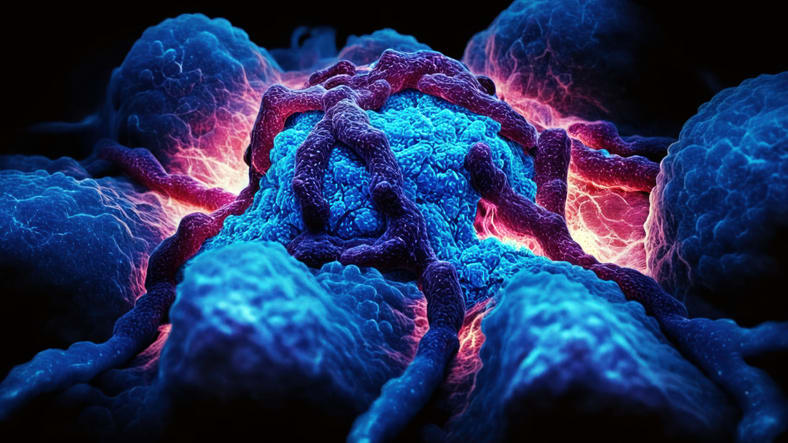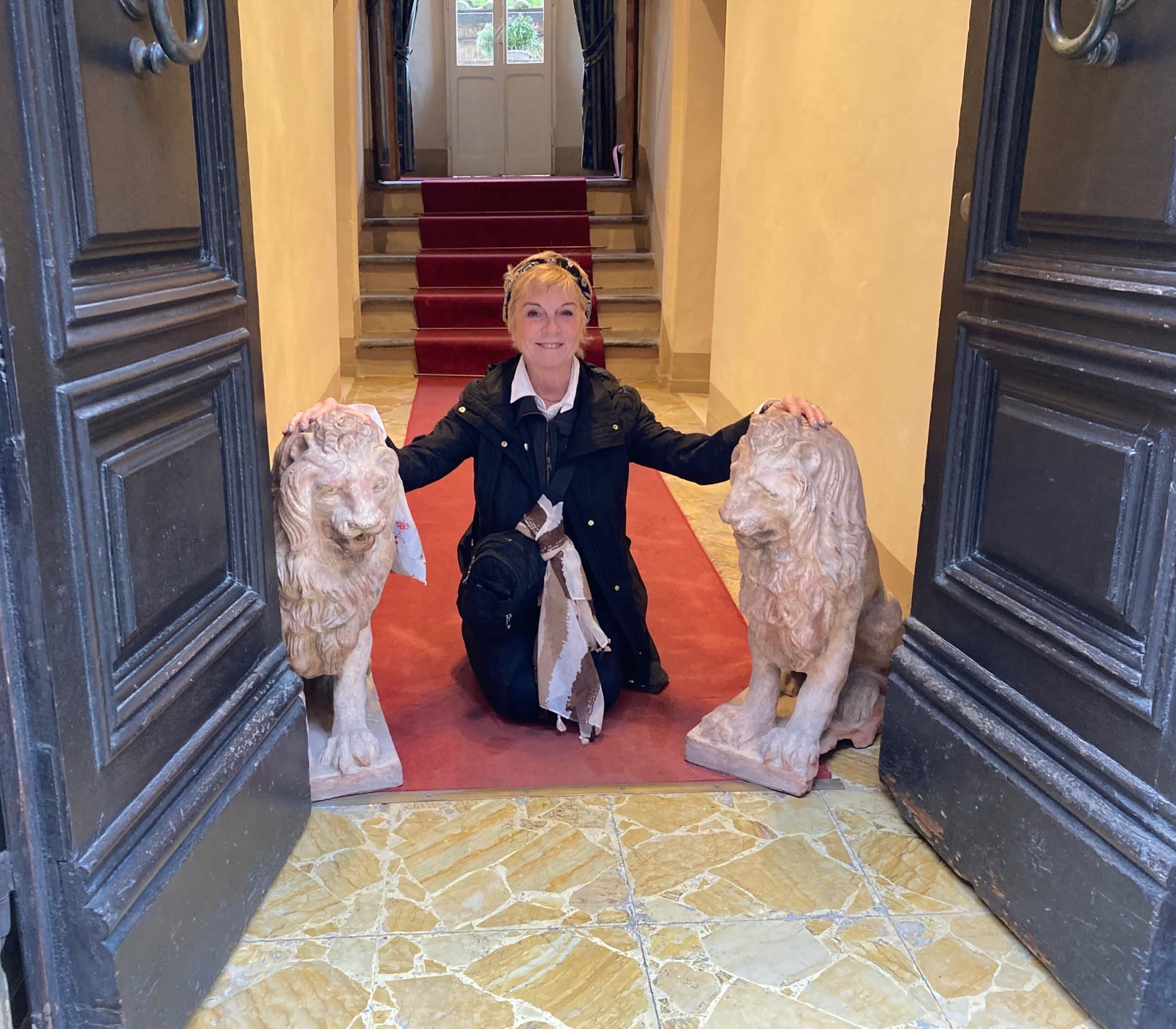Oncoplastic Lumpectomy
Combining Cancer Surgery with Pleasing Cosmetic Outcomes
Oncoplastic lumpectomy combines cancer removal with cosmetic reshaping in one procedure, treating the disease while helping preserve the natural look of your breast. At the Providence Swedish Cancer Institute, we offer this advanced surgical option as part of our commitment to whole-person healing and restoring your confidence.

Treatment Overview
Oncoplastic lumpectomy is a breast-conserving surgery that removes cancer while reshaping the remaining breast tissue for a natural look. During the procedure, your surgeon moves the tissue that once surrounded the tumor to fill in the empty space, improving the symmetry and contour of the breast. It's often done during the same procedure as tumor removal, so there's no need for additional surgery.
At the Providence Swedish Cancer Institute, our experienced surgeons work closely with you to create a treatment plan that prioritizes both your health and your sense of self. For many patients, oncoplastic lumpectomy offers effective cancer care and a favorable cosmetic outcome.
What to Expect
At the Providence Swedish Cancer Institute, we'll guide you through each step of your oncoplastic lumpectomy. From surgical planning to recovery, your care team combines cancer expertise with cosmetic precision to help preserve your breast's appearance and support your healing - both physically and emotionally.
About a week before surgery, we'll schedule a pre-admission visit to:
- Assist with any remaining pre-surgical lab work or tests
Review what will happen during your surgery
Explain potential side effects
Discuss medications and post-surgery care, including in-home help or equipment if needed
You'll receive information to prepare for your surgical procedure. If you have any questions after your pre-admission appointment, your nurse or care coordinator will be happy to help.
Oncoplastic lumpectomy is typically an outpatient procedure, so most people go home the same day. You may have soreness, swelling, and bruising that decreases over the next few weeks. Recovery usually takes 2 to 4 weeks, and you'll need to avoid heavy lifting and strenuous activity during that time. Your care team will be with you every step, helping you heal comfortably and confidently.
Oncoplastic lumpectomy removes cancer while preserving the natural look of your breast. Combining tumor removal with immediate reshaping can improve cosmetic results, maintain symmetry, and reduce scarring. This approach may also decrease the need for future reconstructive surgery. It’s designed to support both your recovery and your confidence in how you look and feel after treatment.
As with any surgery, there are risks, including:
- Infection
- Bleeding or fluid buildup (seroma)
- Changes in breast shape or symmetry
- Poor wound healing
- Scarring or contour irregularities
- Temporary or permanent changes in nipple sensation
Your care team will talk with you about these risks, answer your questions, and help you make an informed decision that aligns with your goals.
You’ll have several follow-up appointments after your procedure for the first few weeks. This helps us monitor your healing and manage any complications. As time goes on, your appointments will be less frequent, but regular checkups are required so that we can continue to manage any of your ongoing treatment needs and watch for any signs of recurrence.
Services are also available to help you through every treatment stage.
Learn more about our supportive care services.
Frequently Asked Questions
Oncoplastic lumpectomy combines cancer removal with cosmetic reshaping in the same procedure. In a standard lumpectomy, the space left by the tumor is usually closed without reshaping, which can lead to changes in breast contour. Oncoplastic techniques use nearby tissue to reshape the breast, helping maintain a natural look and improving symmetry — often without the need for future reconstruction.
You might be a candidate if you have early-stage breast cancer and are planning to keep your breast through surgery. Oncoplastic lumpectomy works best when the tumor is small enough to remove safely while still leaving enough healthy tissue to reshape the breast. Things like the size and location of your tumor, your breast shape, and your overall health are all factors. Your surgeon will talk with you about your options, your goals, and what feels right for your body. Together, you’ll decide if this approach is a good fit for your care.
The goal of oncoplastic lumpectomy is to preserve or restore the natural shape of your breast while effectively treating the cancer. By reshaping the breast during surgery, your surgeon can often minimize visible changes and improve symmetry. That said, every body is different, and outcomes can vary based on how much tissue is removed, where the tumor is located, and how your body heals. Your surgeon will walk you through what to expect and help set realistic goals that reflect your body and your personal preferences.
Not always, but it’s something your care team may discuss with you. If a larger portion of tissue is removed from one breast, it can affect the overall shape or symmetry. In those cases, some patients choose to have a procedure, such as a lift or reshaping, on the other breast to create a more balanced appearance. This is often done at the same time as your cancer surgery, so you only go through one recovery. Whether you choose this option depends on your body and your goals, and your surgeon will talk through the possibilities and help you decide what feels right for you.
Some changes in sensation are common after surgery. You may notice numbness, tingling, or sensitivity in parts of the breast where nerves were affected. Some people experience a loss of feeling, while others may feel heightened or uncomfortable sensations as nerves begin to heal. These changes can improve over time, but in some cases, they may be long-lasting. Your care team will talk with you about what to expect and help manage any discomfort as you recover.
Recovery is different for everyone, but most people return to normal activities within a few weeks. You may have soreness, swelling, or bruising in the breast, especially in the first few days. Some movements may feel uncomfortable at first, and you’ll need to avoid heavy lifting and strenuous activity while you heal. Your care team will give you detailed instructions, manage your pain, and check in regularly to make sure you're healing well - physically and emotionally.
We provide a full range of supportive care services to support you during and after your cancer treatment. Some of these services include:
- Art therapists
- Cancer rehabilitation (onco-physiatry)
- Care coordinators
- Genetic counseling (cancer geneticist)
- Health educators
- Medical massage (edema, lymphedema management)
- Music therapist
- Naturopaths
- Nutritionists
- Oncology nurses
- Social workers
- Speech and language pathology
We can also help with finances, food, transportation, and other challenges for eligible patients through our patient assistance fund.
See the full list of supportive care services.
Note: Some services are provided by local partners and vary based on location. Please contact your clinic for more information.
News & Info From Our Experts



